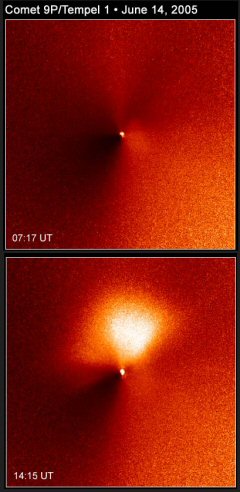
Astronomers got a preview of what Deep Impact’s fourth of July rendezvous with the comet Tempel 1 may look like with images captured by the Hubble space telescope. The pictures have captured Tempel 1’s icy nucleus – roughly the size of central Paris – ejecting material in a spectacular display. The ejaculation of dust and ice from the comet may be similar to what astronomers will see in less than a week, when a probe from the Deep Impact spacecraft will smash into the comet, blasting off material and giving rise to an artificially induced plume of material.
The fact that it’s possible to discern the comet’s details and ejaculatory activities through its vaporous exterior demonstrates the keenness of Hubble’s vision. When the images of the comet were taken, the Earth-orbiting telescope was 120 million kilometers away. To put Hubble’s capability into some kind of perspective, viewing the nucleus of the comet is as difficult as someone trying to spot a potato in Stockholm from Madrid. The task was made possible by the use of the Advanced Camera for Surveys’ High Resolution Camera (ACS), which was installed in 2002.
Looking ahead to next week, astronomers are hopeful that the Independence Day collision will discharge a multi-billion year old bounty of primordial material trapped inside the comet. Comets are thought to be ‘dirty snowballs’, porous agglomerates of ice and rock that dwell in the frigid outer boundaries of our solar system. In Europe, the European Southern Observatory will conduct a huge ground-based observing campaign before and in the week after the impact. Hubble’s “eye” will also be focused on Tempel 1, complementing the close-up images being taken by cameras aboard Deep Impact, which has recently made a trajectory change in readiness for the rendezvous.


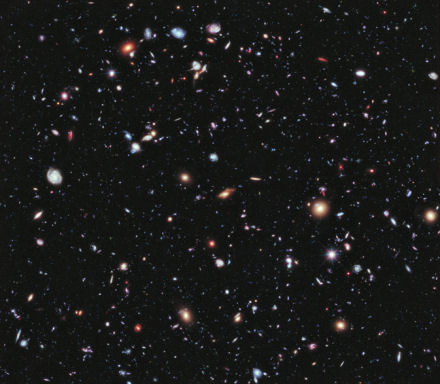

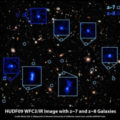
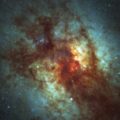









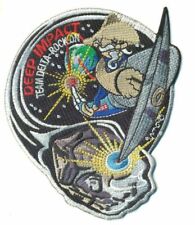
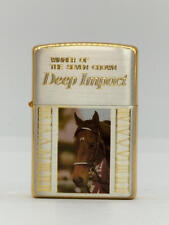

Comments are closed.